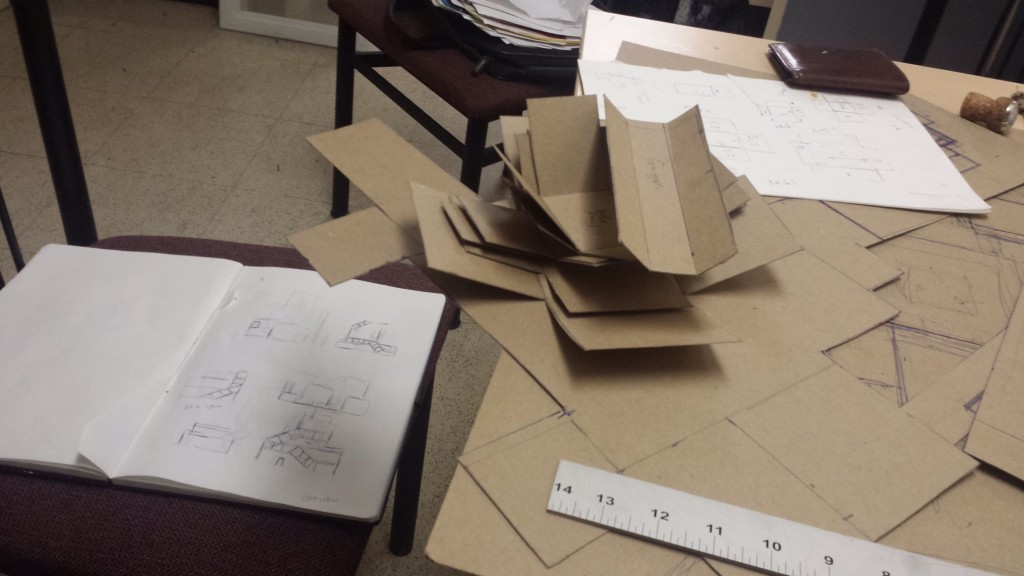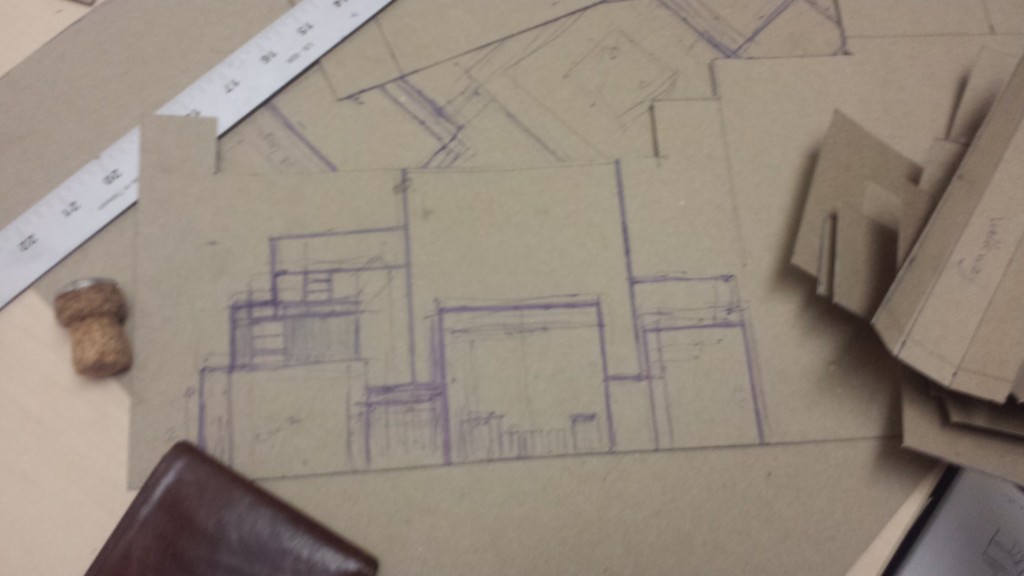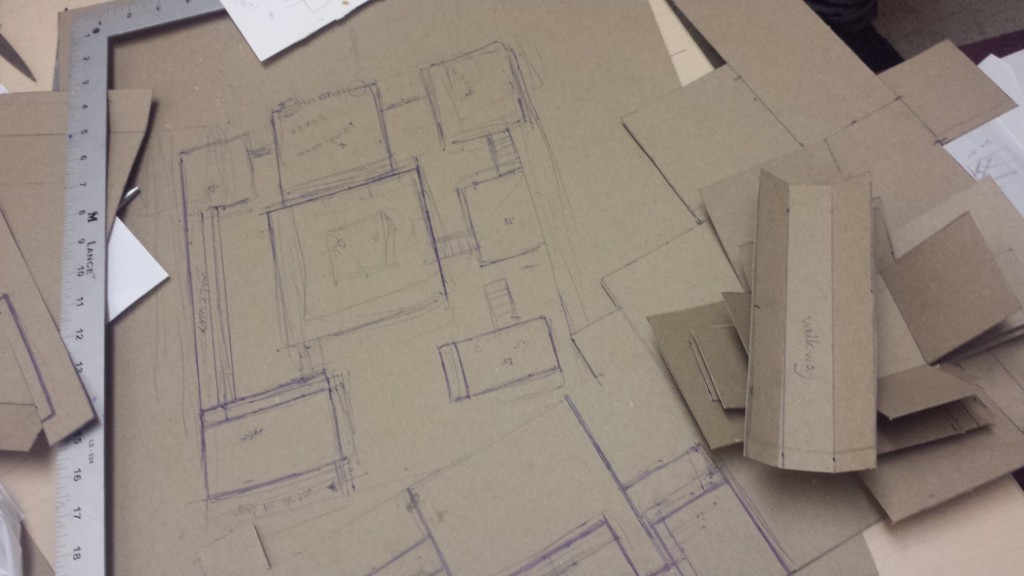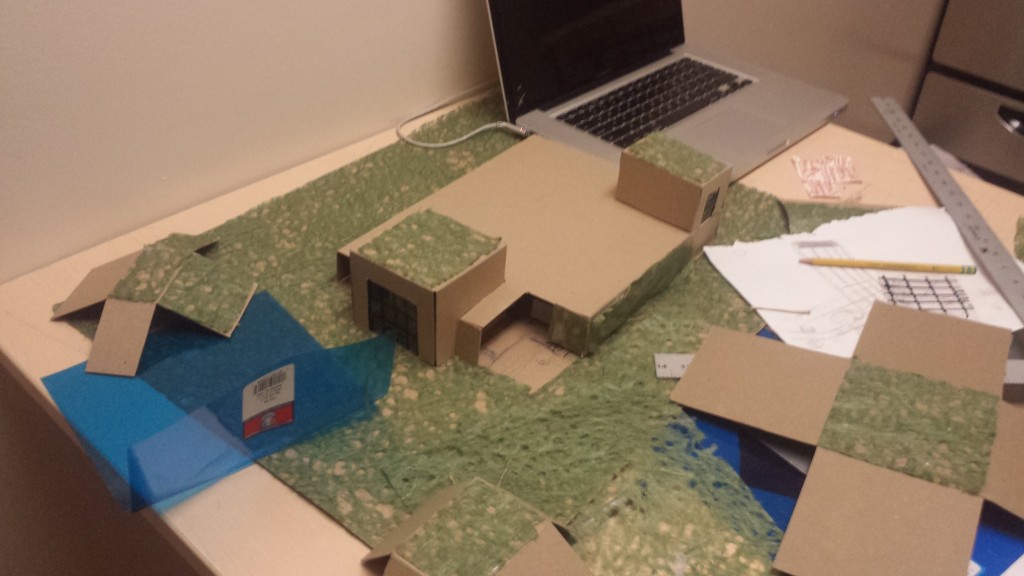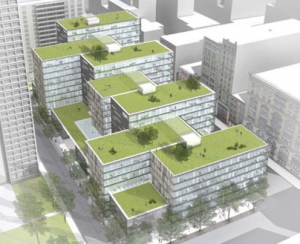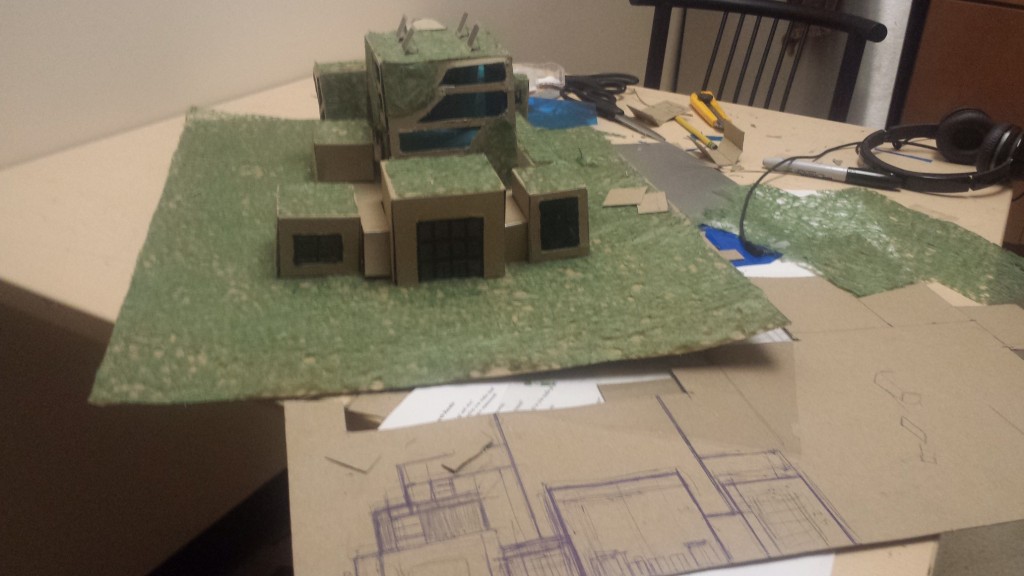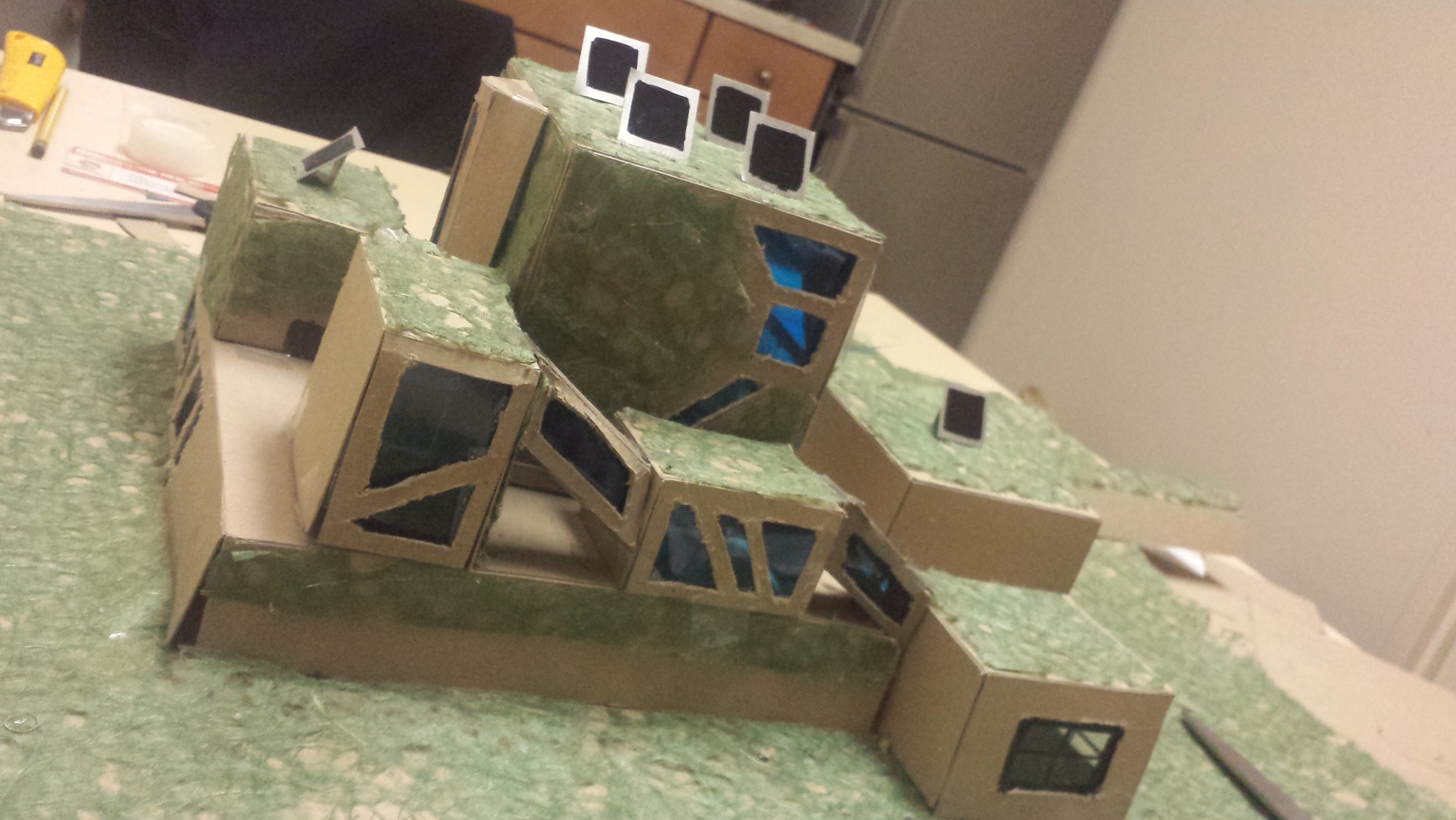
The project I’m choosing to describe is my Integrative Studio 1 final project. The assignment was to create either a project related to architecture/constructed environments, interior design, fashion design, or illustration and make a connection to fake, doppelganger, or an imposter. I chose to create a project in the architecture category, having to do with the concept of fake. My original idea while I thought about this was to create a sort of house or building that has initial green features part of it that aren’t necessarily green.
Something interesting I learned about architecture while gathering information for my project was the concept of “greenwashing” and how common it was. Greenwashing is basically making a a building, structure, or a home, appear as though it is “green” and environmentally friendly through its aesthetics, when in reality, it is not. It shocked me to see how many companies were continuing with this sense of fraud in the design world and how greenwashing was being distributed all because for money and financial issues. That led me to the idea of creating a project that holds many elements of this fraud to show how unnoticeable greenwashing can be.
Some ideas I had for creating the structure was to use cardboard for the material and cut pieces out with the help of an exacto knife. My plan for putting it all together consisted of using scotch tape to tape the inside of the walls together to give it a 3-dimensional appeal, yet being hidden from the outside of the exterior. Some things I got to give this building the “green appeal” was some thing paper-like material to put on the outside to represent grass.
Once I talked to my professor and some classmates about my plan, I realized what an emerging idea this was. After doing much research on upcoming “green” buildings, I found a structure that looked aesthetically pleasing and gave me an idea for my project. I found an article online mentioning how NYU had plans to tear down their old gym to replace it with a new one to fit all their general needs. When I saw the gyms renderings, I couldn’t help but notice how contemporary and progressive it looked, yet it mentioned nothing about it having any green features.
The aesthetic structure gave me the idea to produce something similar to it with green exterior, features, etc. I quickly drew out some sketches to help portray my idea of how to make this building look like an imposter. I sketched different shaped buildings with green exterior features from buildings such as the New School University Center. Below are some of my original sketches.
After coming up with a few features that deemed to display the greenwashing look I’d been going for, my professor advised me to research more about the inside of greenwashing and come up with other features that may not be visible from the exterior of the building, but still breaking the rules of having these “green features” and by breaking the rules of the LEED instructions. After finding multiple site links that gave clear evidence about buildings that were using greenwashing, I decided to create a building in order to use my fake-imposter concept to the fullest. Some features that I had in mind while sketching out ideas for my building were the use of solar panels, grass green roofs, reusable glass for the exterior, and many other ideas.
At a certain point in the process, I only had a few exterior ideas to convey my use of greenwashing. To increase my knowledge and my point of greenwashing, I looked up the list of requirements that makes a “green” building green. Under the LEED (Leadership in Energy & Environmental Design) website, I found multiple examples that make a building green and how I could distribute these into my building. Some examples include reducing drinkable water usage near plant life or on project site & using recycled water/captured rainwater to reduce irrigation/eliminate irrigation (water effiency), using existing interior non-structural elements (interior walls, doors, floor coverings and ceiling systems) in at least 50% of the building (materials & resources), and keeping the lights on during a day and night span to show how the buildings open all night.
After much time, work, and observation, I finally got to display my project and its meaning. My projects thesis basically portrays a current day greenwashing building trying to look environmentally friendly and beneficial when it is actually doing the opposite. With my project having a lot of evidence of greenwashing, I think my project turned out to be successful by conveying a persuasive meaning that really changes peoples vision or idea of what they think of architecture and current environmental issues.
